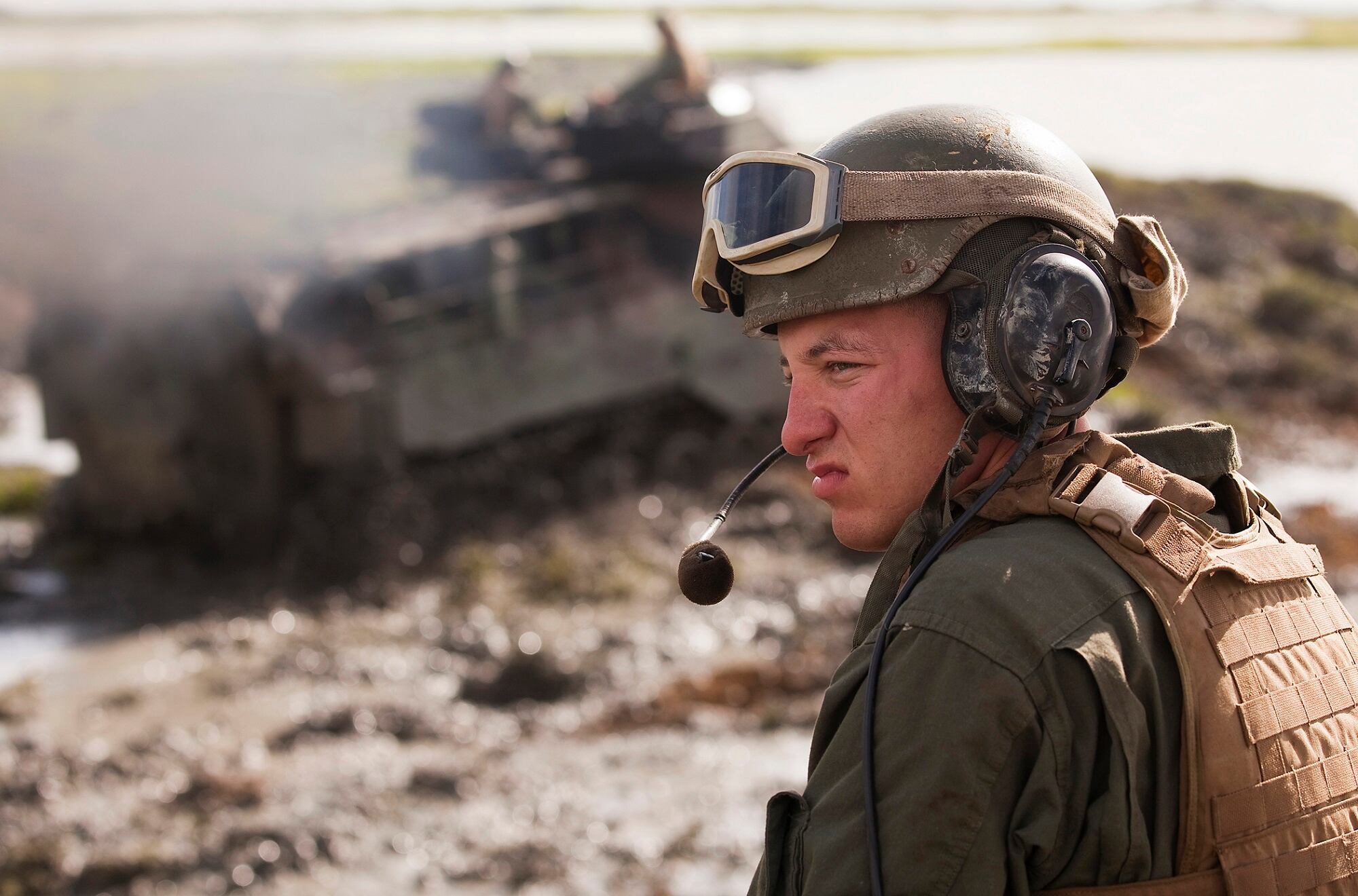Changes in how the Navy and Marine Corps fight together could see Marines aboard both military and commercial ships as they traverse crowded seas, accompanied by small aircraft carriers filled with unmanned drones.
Both the Marine Corps commandant and his top general at combat development are looking at new ways that Marines and an evolving Navy fleet will fight in the crowded sea space of future wars.
And at least one analyst called plans by Commandant Gen. David Berger a “once-in-a-generation” change in Marine Corps thinking.
RELATED

Berger’s planning guidance, released in July, looks to move away from the unfeasible 38-amphib ship goal and instead use a mix of amphib ships, smaller expeditionary sea bases, fast transport ships and even commercial ships to move Marines.
This is all an effort, Berger wrote in an article for the website War On the Rocks, titled “Notes on Designing the Marine Corps of the Future,” for the Navy, Marine Corps and Coast Guard to design its own “cabbage strategy.”
That’s a reference to the Chinese method of enveloping a contested area with a variety of boats, from commercial fishing ships to marine surveillance ships and actual warships that wraps an area in layers, like a cabbage.
That scenario makes conventional warfare and naval deterrence and access much more difficult, creating hazards that have international consequences such as a military vessel colliding with a commercial ship.
And to meet that challenge, Berger points out, the current forward bases and infrastructure all within range of enemy weapons, are “extremely vulnerable.”
As are the large ships now in service with “large electronic, acoustic, or optical signatures.”
The shift in how Marines would fight from and back to the sea also changes how the Navy could fight.
Vice Adm. James Kilby, who heads war fighting requirements and capabilities, said that traditionally, naval leaders think of how Marines influence the land component of a sea battle, not the sea. But if they can have effects on sea access and deny enemies movement, then he, as a naval commander can think differently about how to employ his ships.
All of which support recent statements from top Marine leadership that the force has to get lighter, work in smaller formations in support of naval operations, said Lt. Gen. Eric Smith, head of the Marine Corps Combat Development Command.
Getting lighter pairs with “lightning carrier” experimentation ― using smaller aircraft carriers that take advantage of the F-35 capabilities. It even calls for an air wing that consists “mostly or entirely of unmanned aerial vehicles.”
Those comments are from a Thursday a U.S. Naval Institute panel, an article by Berger published the same day and a Congressional Research Service report published in November.
The panel featured Smith, Kilby and Ronald O’Rourke, naval affairs specialist for Congressional Research Service.
Drawing on his CRS report, “Navy Force Structure and Shipbuilding Plans: Background and Issues for Congress,” O’Rourke said that combined changes advocated for both force design and managing and training Marines falls somewhere between, “a total house cleaning and a complete revolution for the Marine Corps.”
O’Rourke noted that the long-held goal of a 38-ship amphibious force within the larger 355-ship Navy was to meet the requirement to lift assault echelons of two Marine Expeditionary Brigades. That requirement dates to 2006.
Todd South has written about crime, courts, government and the military for multiple publications since 2004 and was named a 2014 Pulitzer finalist for a co-written project on witness intimidation. Todd is a Marine veteran of the Iraq War.





